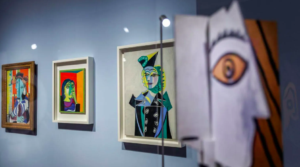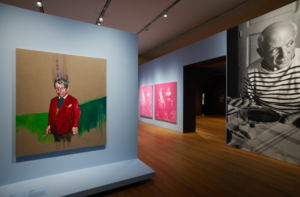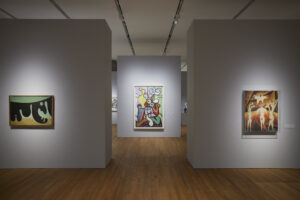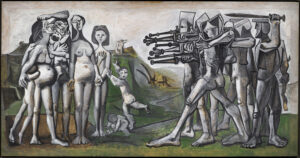Picasso and Asia: A Singular Dialogue Exhibition in Hong Kong
M+ recently opened its doors to the special exhibition Picasso for Asia: A Conversation which will be on view until 13 July. Co-organised by M+ and the Musée national Picasso-Paris, and co-presented with the French May Arts Festival, this unprecedented exhibition represents an intercultural and intergenerational dialogue between more than sixty masterpieces by Pablo Picasso (1881–1973) from the Musée national Picasso-Paris and around 130 works by thirty Asian and Asian-diasporic artists from the M+ collections and other loans.
Offering a circular look at Picasso’s legacy, examined from a contemporary Asian perspective decentred from the Western point of view, the exhibition is a testament to the enduring impact of Picasso’s work and its resonance with contemporary Asian art.
Picasso for Asia features major works by Picasso, such as Portrait of a Man (1902–1903), The Acrobat (1930), Figures by the Sea (1931), Large Still Life with Pedestal Table (1931), Portrait of Dora Maar (1937), Massacre in Korea (1951), and the sculptural series The Bathers (1956). Picasso’s artworks are presented in parallel with works by artists such as Isamu Noguchi (American, 1904–1988), Luis Chan (Hong Kong, 1905–1995), Gu Dexin (Chinese, born 1962), Nalini Malani (Indian, born 1946), Tanaami Keiichi (Japanese, 1936–2024), and Haegue Yang (Korean, born 1971), as well as new artist commissions by Simon Fujiwara (British, born 1982) and Sin Wai Kin (Canadian, born 1991).
Organised thematically through four artist archetypes (The Genius, The Outsider, The Magician and The Apprentice), the exhibition explores the concepts of identity, cultural exchange and the reinterpretation of form and style.
The Genius
Known as a child prodigy and aware of the power of genius, Picasso would often deliberately portray himself as a mythological figure with superhuman abilities in his works. Despite his worldwide success, Picasso continued to produce and experiment relentlessly until his final years, as an attempt to prove his brilliance until the very end.
The Outsider
Picasso rebelled against established artistic traditions and styles, and preferred to depict people at the margins of society. He co-founded Cubism and appropriated diverse cultures and artistic heritages, particularly African art. Picasso insisted on constantly changing his own style, even when it provoked rejection or outrage.
Featured alongside Picasso in the exhibition, self-taught artist Luis Chan (Hong Kong, 1905– 1995) also observed society from an outsider’s perspective, depicting people from every segment of Hong Kong society, questioning their perceptions of wealth and abundance.
The Magician
Picasso would often transform ordinary objects into works of art. In his later years, he began to make ceramics, crafting whimsical plates, vases and figurines, as a tentative to reveal the exceptional in everyday life.
In the exhibition, Picasso’s innovative use of materials and forms is mirrored in the works of contemporary artists who experiment with mixed media. Contemporary artist Haegue Yang (South Korean, born 1971) uses pressed cinnamon spice powder in various hues to make complex geometric compositions, while Feng Guodong’s (Chinese, 1948–2005) assemblage combines discarded wood and metal fragments into a clockwork that captures time.
The Apprentice
Picasso frequently learned and borrowed from other artists and makers. He found inspiration in their works and, in his own way, sought to compete with them. The apprentice within Picasso was eager to learn, experiment, and, ultimately, surpass his predecessors. Just as the artists in this exhibition are in dialogue with history, some even referencing Picasso directly.
Picasso for Asia is a celebration of artistic dialogue across cultures and time periods. By juxtaposing Picasso’s masterpieces with the works of contemporary Asian artists, the exhibition creates a rich tapestry of ideas and inspirations that resonate with viewers.
In parallel to the exhibition, M+ and the French May Arts Festival will co-present a series of programmes, including free family drop-in events and special educational tours.
M+ Cinema will also offer a selection of films exploring Picasso’s life and work, like Guernica (1950) by Alain Resnais, The Mystery of Picasso (1956) by Henri-Georges Clouzot, Minotauromaquia (2004) by Juan Pablo Etcheverry, and On the French Riviera with Man Ray and Picasso (2021) by François Lévy-Kuentz.
Details about the exhibition can be found here: Picasso for Asia: A Conversation




